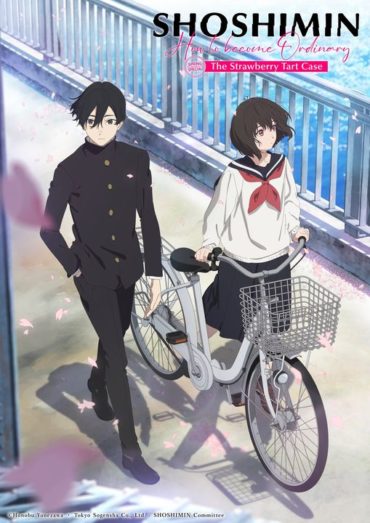Summer 2024 Overview
Rather like the unreliable UK weather this summer, the Summer anime series have been stop-start, affected by the Paris Olympics, some off-air for a few weeks in mid-run and/or finishing at 10 episodes instead of the usual 12! And at Anime UK News, our writers find themselves asking – as the concept of a quarterly anime season becomes ever more fluid (Netflix and Disney+, we’re looking at you) – what impressed us the most? Which series were the standouts?
Josh A. Stevens
Unexpected Diamond
Back at the start of the season, I made a bold claim. Reviewing the first four episodes of the romantic comedy anime Makeine: Too Many Losing Heroines, I said that if the series sticks the landing, it could “very well be a contender for anime of the year”. Well, with its final episode broadcast over the weekend, I have reflected on my words… and am absolutely sticking to my guns. Some highly anticipated shows from next season notwithstanding (looking at you Uzumaki), Makeine: Too Many Losing Heroines is currently my favourite anime of 2024.
For those who aren’t aware, Makeine isn’t a series about the girls who win their crush’s heart after the dramatic final episode confession – it’s about the childhood friends and underclassmen left behind. Anna Yanami is one such losing heroine, who we meet as our protagonist Kazuhiko Nukumizu unintentionally witnesses her dramatic rejection, and resulting moment of shame. Through a lunch debt, the two become unlikely friends – and are soon joined by the simple-minded but simply sweet Lemon Yakisho, and the timid gremlin Chika Komari, who are failures in their own romances.

The initial four episodes that I previously reviewed covered the first “arc”, setting the stage for the three main losing heroines, before dealing with the fallout of Anna’s rejection. Back then, I applauded the series for its mature approach to rejection – something that we all experience (right? Right?!) but few romance stories handle… well. This fortunately remains a consistent throughout the show – although there is some juicy melodrama to enjoy along the way.
Makeine can be broken up into three distinct story arcs, each marked by a unique ED theme focusing on one of the three primary girls. Lemon’s focuses on her coming to terms with having never shared her feelings for childhood friend Mitsuki until she accidentally blurts it out in front of him – and his girlfriend Chihaya. This part of the story feels closer to usual anime romance fare, as of course the next logical step is for Lemon to suddenly leave for her grandmother’s in the mountains. Despite the more theatrical set-up, I was relieved by its down-to-Earth resolution that felt more in fashion with the Makeine that I came to love in the opening episodes.
Where I’m more on the fence, though, is the resolution of Komari’s story. With her upperclassmen in the Literature Club graduating soon, the feeble fujoshi is fearful of being left behind, while also struggling with her self-confidence in taking the helm of the club herself. While the story thus far jumped through hoops to assert the agency of its female cast, I have mixed feelings on where the story left Komari.
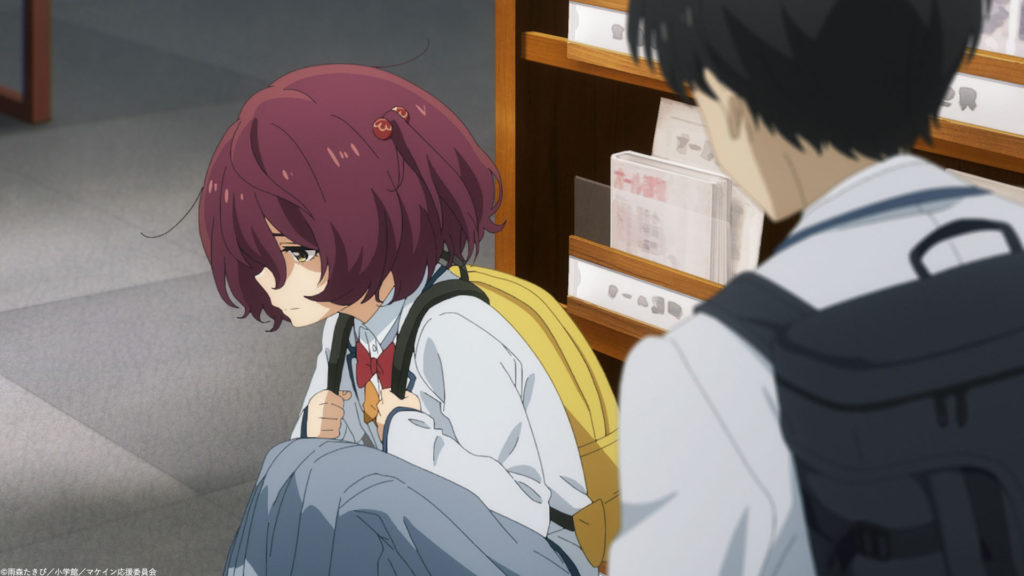
Still, whatever misgivings I may have on specifics of the story are completely overridden by how much I just love the core cast and their chemistry together – and I don’t mean that in a harem way. Nukumizu and the three losing heroines all just feel like genuine mates who freely support and shit-talk each other in equal measure with exchanges that are sharp and genuinely hilarious. This is especially true of Nukumizu and Anna, who comfortably rib on each other and feel like the “main” pairing, even if the series does have fun dancing on the “will they? won’t they?” knife’s edge. However, the most fun and compelling relationship in Makeine is without a doubt that between Anna and food. Anna is a delightful force of nature, and I cannot praise Hikaru Tono enough for bringing Anna’s charming insanity to life. I’m really going to miss that idiot.
Where Makeine can fall into more typical anime tropes, though, is the supporting cast. Although Nukumizu’s younger sister Kaju doesn’t reach the indecency of Yuki in Alya Sometimes Hides Her Feelings in Russian, the obsession with her brother drags up some of the anime medium’s worst tendencies. In a similar vein is the high school nurse Sayo Konami, who is a bit too obsessed with the love lives of her students (although, fortunately, her appearances are brief). Both characters are relatively mild compared to other anime, but I’d be able to recommend Makeine to more people unfamiliar with anime if they weren’t in it. They also don’t hold a candle to the series’ best supporting character: the student council secretary Yumeko Shikiya, who steals every scene with her zombie-esque mannerisms.
I mentioned this during my review of the earlier episodes, but Makeine is absolutely gorgeous. The settings have a lived-in feel with signs of everyday wear, and character movement is remarkably smooth. Honestly, a show like Makeine has no right looking this good, but A-1 Pictures stepped up already. I would say this would also be a shoe-in for the best-looking anime of the year if not for the Fuguku’s unreal work on the autumn season’s Uzumaki, so we’ll just have to settle with it being a standout for this season.
All too often, I’ve fallen for an anime’s opening episodes, only for it to miss the landing, or fumble the ball so badly that it has no chance to recover (I’m looking at you Izetta the Last Witch). However, Makeine has been a consistent delight. With an inspired premise that feels fresh in the crowded genre of high school romance anime, and a production team that really believed and elevated the source material, I wish more people were talking about this series – so, if you haven’t already, please do check it out.
Returning Champion
I have to admit something: I never watched the original Spice & Wolf anime. I own both seasons on DVD, but they’ve been collecting dust on my backlog for years, and I even own the original printing of the light novel’s English release that has the controversial alternative cover. So, when a reboot was announced, I knew that I finally had to give this franchise a go, and… I get it.
Spice & Wolf: merchant meets the wise wolf is a fantasy not about sword-wielding adventurers or grand plots to overthrow a demon lord. It’s about a humble merchant called Kraft Lawrence, whose great battle is to turn a modest profit as he journeys from town to town trading wares. That is, until a runaway naked woman smuggles herself aboard his carriage. With perky canine ears, a bushy tail, and a charming twang to her voice, this girl isn’t some weirdo exhibitionist: she is the wise wolf Holo, a Pagan God worshipped for her ability to conjure bountiful wheat harvests by the town she wishes to flee. Agreeing to take Holo with him until they reach her homeland, Lawrence continues on his travels with his newfound companion.
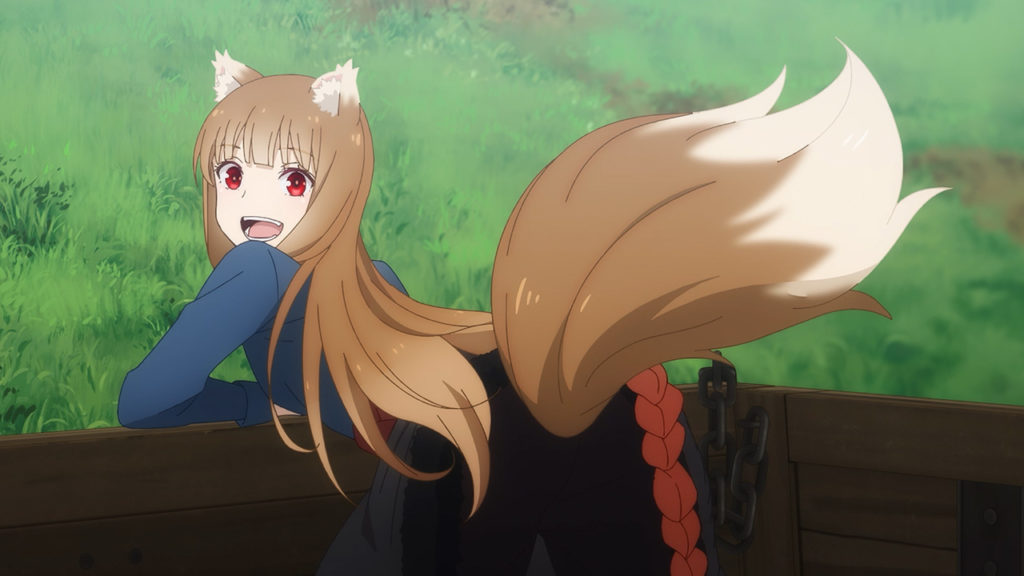
Spice & Wolf was my comfort show. Even though much of Lawrence’s finance talk went over my head, and an arc dedicated to the Pyrite stock market dragged on beyond its welcome (especially due to its lack of Holo, thanks to an overconfident Lawrence), I was always more than happy to just be swept along each Monday by Holo’s capricious charm and the playful yet enchanting vocal performance by Ami Koshimizu. With a delicate and graceful fantasy score by Kevin Penkin (Tower of God) and enchanting opening songs by Hana Hope (cour 1) and Aimer (cour 2), the series always felt like a pleasant journey. Even when the story swerved as the result of a deal gone sour, or the vaguely Christianesque church threatened to assert its growing authority, I was committed to the journey. Animated by Passione, the series is also just utterly gorgeous. I can’t wait to own it on Blu-ray one day.
The cast of Spice & Wolf were utterly charming. I’ve probably waxed lyrical enough about Holo already (I haven’t and can go on), but watching her and Lawrence gradually grow more comfortable around each other, slowly kindling a chemistry that had me screaming “just kiss already!” was just so much fun to watch. A lot of the supporting cast were also just precious, like the shepherd Norah, and the fledgling deaconess Elsa.
For a show about capitalism, the soothing charm of Spice & Wolf was the perfect medicine to sooth my soul dreading the start of a new work week. Having just experienced my first Monday without Holo, it just felt wrong. Hopefully the recently announced Season 2 doesn’t take too long.
Makeine: Too Many Losing Heroines and Spice & Wolf: merchant meets the wise wolf are streaming on Crunchyroll.
Sarah
Returning Champion
One of the best fantasy anime series this year (in a strong year for fantasy) Yatagarasu: The Raven does Not Choose its Master ended with only seven episodes in its second story arc (the series has twenty episodes in all) but has remained utterly compulsive viewing. Based on Chisato Abe’s series of fantasy novels (not yet available in translation) the series is set in the hidden country of Yamauchi whose inhabitants are all yatagarasu, shape-shifting three-legged ravens that spend most of their lives in human form. Yukiya, the rebellious younger son of the lord of the North, is sent to serve the enigmatic crown prince, Wakamiya, who is said to be the true Kin’u – golden raven – of legend. The second story arc leads from the ravages of monstrous, yatagarasu-devouring giant monkeys in the North into a chilling journey through the dark of subterranean caves for Yukiya on a dangerous, time-sensitive quest. Is there a link to the deadly effects of a forbidden recreational drug called Sagecap?
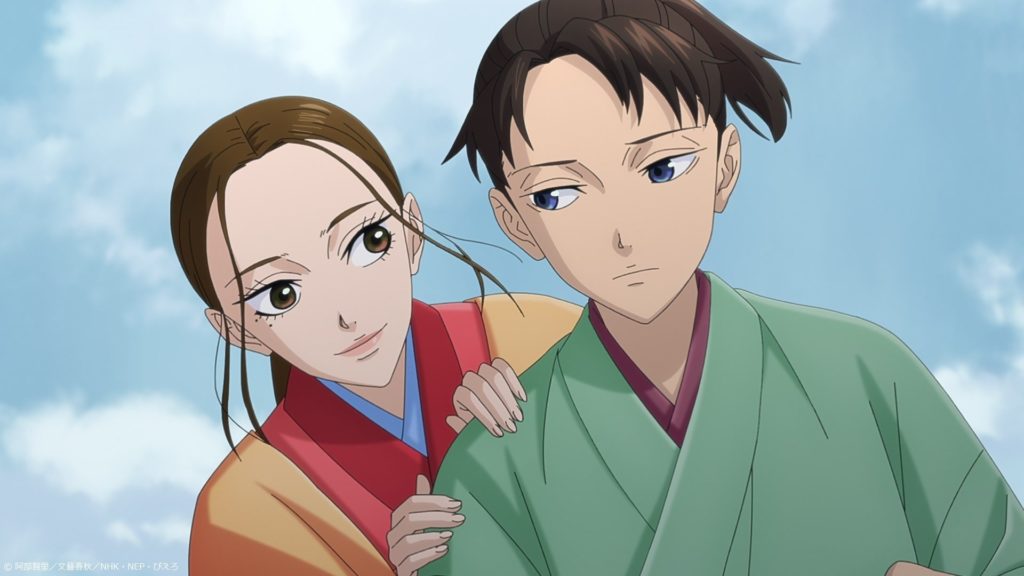
An extraordinary reveal (which I won’t spoil here) turns everything we’ve been told about the yatagarasu on its head. I don’t think – in this case – it’s a cop-out on the author’s part, although it very nearly could have been. But this kind of reveal in a fantasy requires a great deal of skill to pull off. However, it doesn’t in any way detract from the suspense created within each episode or the way the characters are portrayed, by the design, the animation, and the voice actors. It’s impossible not to want to see more of Yukiya and his royal master.

Hoping that this will return (there are more novels to adapt!) but even if it doesn’t, it’s one of the few series this year that definitely repays a second viewing.
Hotly Anticipated
The story of three m/m relationships that develop around a high school film club was respectfully faithful to Jyanome’s beautifully drawn manga series. Concentrating on the first four volumes, Twilight Out of Focus played a little with the timeline to provide a satisfying conclusion – although I felt it could have ended at Episode 10 and anything else that followed would have been extra icing on the cake. In Boys’ Love anime, we’ve had to endure some less-than-stellar offerings over the years but recently, thanks to Blue Lynx (Given and Stranger on the Shore) the bar has been set much higher and the budgets have increased. Even though there were some later scenes where characters’ faces went off-model, the overall standard was high. Above all, the adaptation is very faithful to the original manga – a big plus.
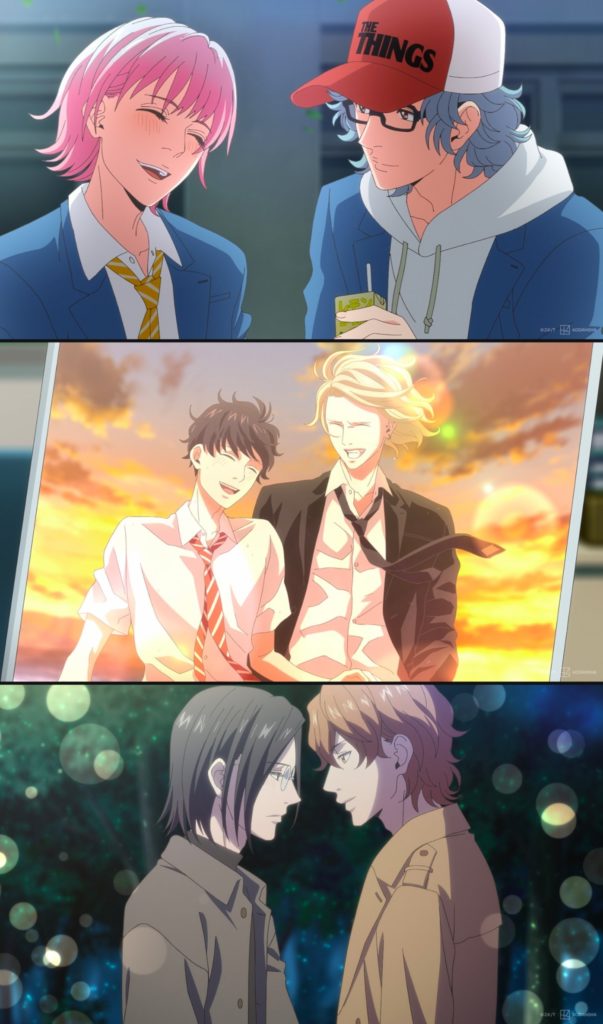
The series focuses at first on roommates Hisashi and Mao (the second-year cameraman in the film club) and follows them as they make three vows about co-habiting which – inevitably – they eventually break as they fall in love. Second and third years in the film club are making films to compete in the school cultural festival and when second-year director Giichi decides to create a Boys’ Love story (the third years under Jin are working on a stop-motion/live action science fiction) the chips are down. Hisashi (who has never acted before) is cast as one of the leads in the second years’ film and turns out to be a natural. Rival directors Giichi and Jin fall out – and then, after a Naruto/Sasuke-style incident, discover that they have much more in common than they could have imagined. Have they met before – when they were children? One of the new first-year members, pink-haired Shion is brazenly upfront about his reasons for joining the club: he wants a boyfriend! When third-year Rei offers to take on that role, all kinds of misunderstandings ensue. Somehow, amidst these romantic complications, the two films are rehearsed, shot and edited – and then entered into the competition. Which year will be the winners?

Thanks to Jyanome, this series is blissfully free of the troublesome clichés of many early BL anime that got them a bad reputation (especially non-consensual sex) and though there are scenes of a sexual nature, they’re sensitively done (kudos to the VAs, both Japanese and US dub). There’s also the underlying theme of the swift passing of time and the pressure to choose what to do when high school is over which will ring true for many viewers. The love of film (Mao is obsessed) permeates everything; he ‘sees’ everything through the lens of a camera, whether it’s his smartphone or the movie camera. It’s a quiet, subtle series but well worth watching.

Unexpected Diamond (or…was it?)
The Elusive Samurai based on the (ongoing) manga came in at 12 episodes but left the impression that it had only just got started. I’m not familiar with the manga (Shonen Jump/VIZ Media) but the treatment by CloverWorks is eye-poppingly colourful, exuberant to the point of being hyperactive, merrily throwing mixed media into the animation pot (stills, photographs, 3GI, crude caricature comic-style etc.). If I went in expecting a respectful historical version of the stirring events of 14th century Japan, I was very soon disabused!
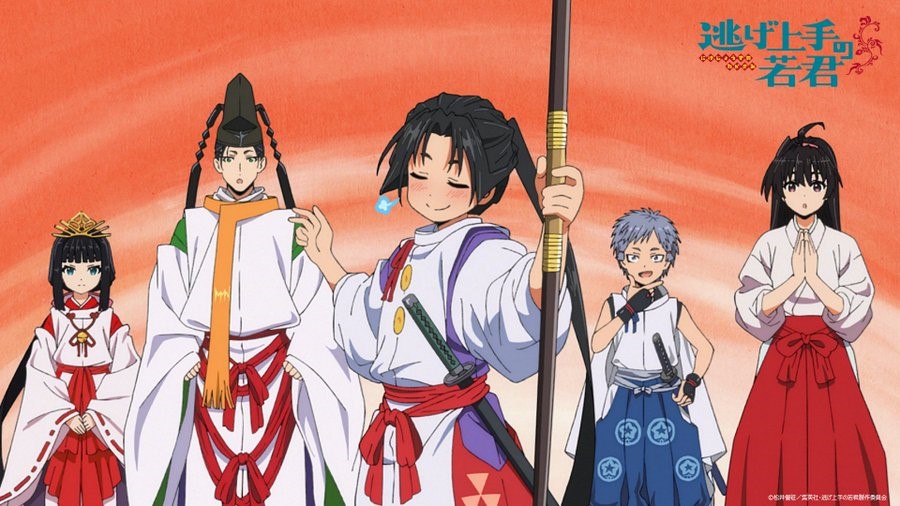
The story of nine-year-old Lord Tokiyuki, the ‘elusive samurai’ who has a talent for running away and is the only survivor of the ruling Hojo family at Kamakura is based on history – but mangaka Yusei Matsui (Assassination Classroom) shows us the past through a twenty-first century lens. Rescued by eccentric priest Yorishige Suwa who can see the future (most of the time) Tokiyuki gains five young companions who aid him (directed by Suwa) in his fight to stay alive and eventually restore the Hojo family’s fortunes. Which is all well and good – and often accompanied by some excitingly animated battle sequences which veer between the grotesquely comical and the realistically gruesome. Blood spurts when people are wounded or killed. Heads roll. Grotesque is in fact the order of the day as many (if not quite all) of the adults are presented as nightmarish villains or villainous cowards out to take advantage of others’ misfortunes. It turns out that they’re drawn this way in the manga but they don’t make for an easy watch with all the gurning, leering and eye-boggling that goes on. In contrast, the heroic and clever children are attractively presented (even though tactician Kojiro is always hungry (for millet) and shape-shifting Ganbe can’t see a young woman without a gushing nosebleed). So I found it turned into something of an exhausting watch and having hoped that the anime would explore further what happened next in Kamakura, it was disappointing that it ended where it did.
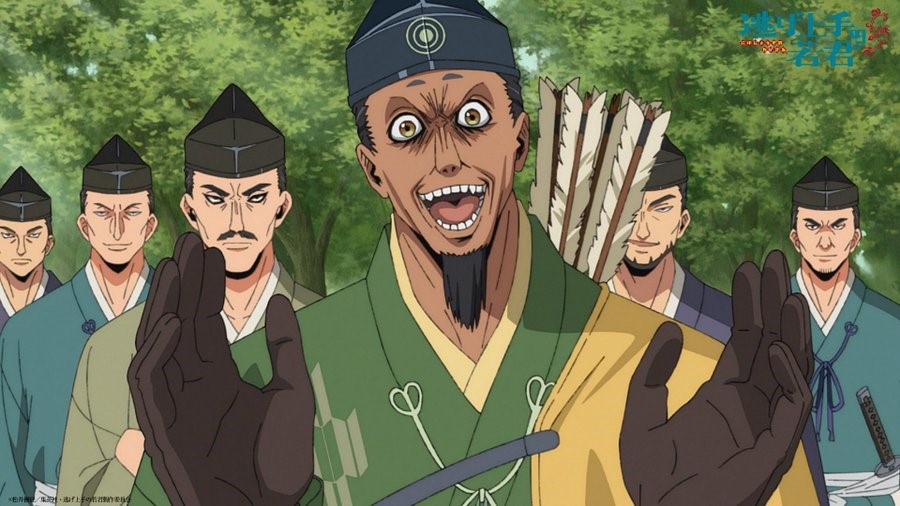
Strengths? It has an extraordinary energy that’s expressed best in the brilliant OP: “Plan A” performed by Dish, and the ED “Kamakura Style” performed by Bocchi Boromaru. Both songs are – for me – the best this season as they reflect the content of the series in the wildly imaginative animation that’s well matched to the music. They’re also really good songs, not relying on the all-too prevalent musical cliches to be heard in so many series these days. Would this show persuade me to seek out the manga to find out what happens next? Um…
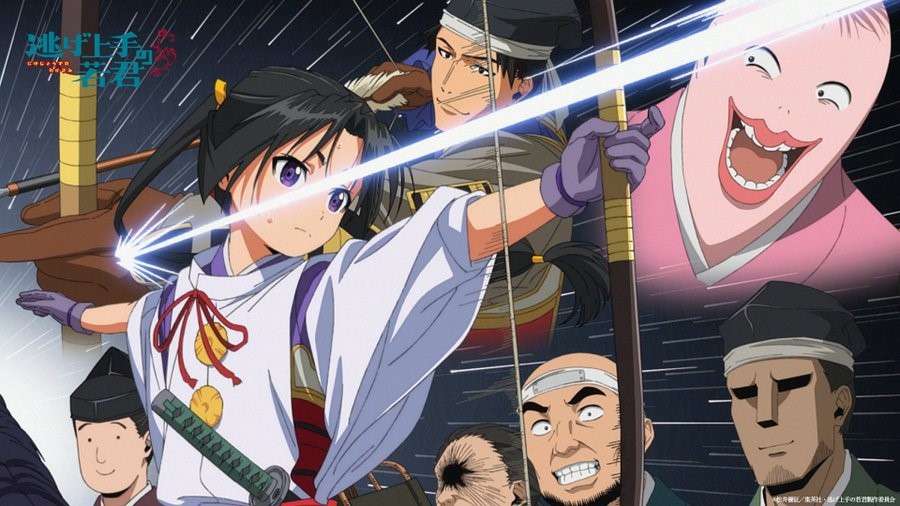
Stop Press It looks as if The Elusive Samurai may be getting a second season.
Twilight Out of Focus, The Elusive Samurai and YATAGARASU are all streaming on Crunchyroll.
Demelza
Hotly Anticipated
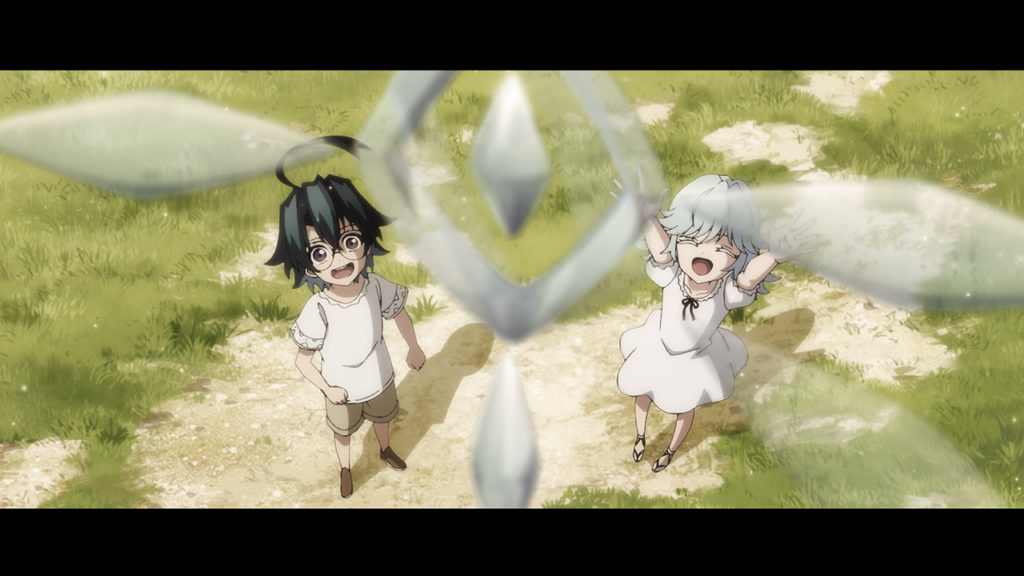
Without a doubt, my most anticipated series for the Summer season was Wistoria: Wand and Sword. Anyone who knows me can tell you how much I like Fujino Omori’s work from his bestseller DanMachi to the original manga for Wistoria, but I was apprehensive about the anime adaptation for this one. Coming from a combination of studio BN Pictures and Actas, prior to airing we weren’t treated to a lot of footage in the way of PVs and the first key visual just didn’t inspire confidence in me.

Thankfully once it began airing my fears were put to rest as we were presented with one of the most action-packed and well-animated shows of the season. This is a series well known for its battle scenes, given protagonist Will is studying at a magic academy but is magicless and relies on his skills with a sword to get by, so that was always going to be the element that the studio adapting it needed to nail – which they have! As we watch over Will, we see him fight off other mages and monsters alike, as he dreams of advancing beyond the academy and into the tower where his childhood friend and the best of the best wait.

It’s through these battles with friend and foe that Will gradually proves himself and earns the respect he deserves from his fellow students. Plenty of characters are first introduced as antagonists only to become friendly as the story goes on. It’s very much the shonen trope that we’re all familiar with, but that’s okay. Will is an earnest and hardworking lead who deserves to be respected; he’s just in a society that frowns upon his very existence, which makes it all the more important that he does gain this recognition so that the story isn’t overly grim.
With the team having adapted the first five volumes of manga, we viewers have seen enough material to figure out what’s at the heart of this story. Many viewers have found it too generic given the magic academy setting and underdog protagonist, but as always with an Omori series there’s a surprising amount of depth to the world-building and characters. In fact, the anime has even been adding in details that he had to omit from the manga, due to page limits and pacing! So your patience will be rewarded provided you find yourself even slightly interested in the premise. With a second season confirmed there’s plenty more to look forward to, but in the meantime, Will passes the baton to Bell for the fifth season of DanMachi…
Unexpected Diamond
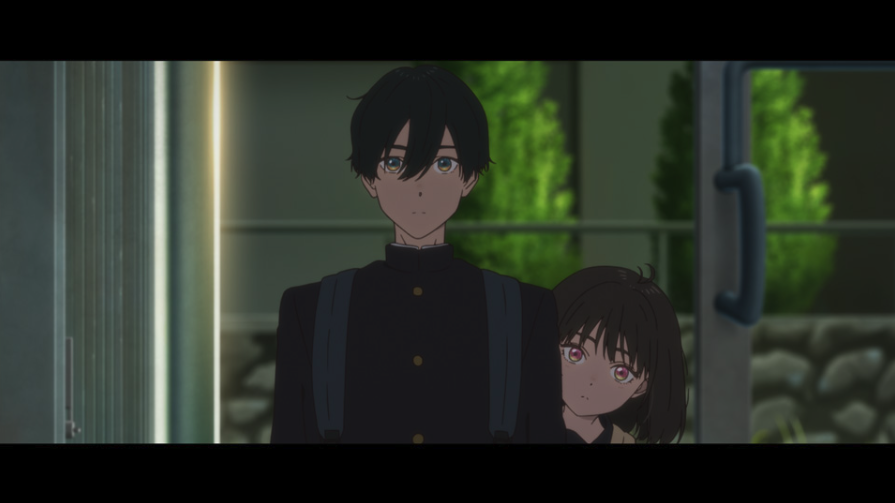
I’m a big fan of author Honobu Yonezawa thanks to Hyouka, so I’m always happy to see more of his novels adapted into anime. So of course when Shoshimin: How to Become Ordinary came along, I knew I had to watch it. The story follows Jougorou Kobato and Yuki Osanai, two students who want to spend their days peacefully as ordinary people. The two have been hurt in the past due to their interest in mysteries and the lengths they’ve gone to to solve them. However, as much as they strive to stay away from problem-solving, their curiosity often gets the better of them, leading them to become embroiled in all kinds of things.
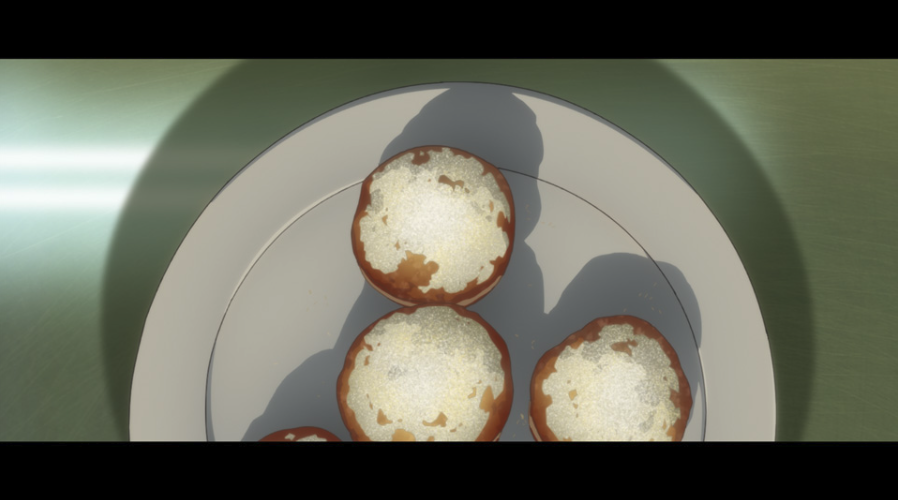
In many ways, Shoshimin is similar to the beloved Hyouka series. Set in a high school with a protagonist who’s been hurt in the past and a heroine with a taste for sweets and an active drive to figure out any puzzle in front of her, there are many similarities to draw. In many ways, Hyouka was more of a character piece whereas Shoshimin puts more emphasis on the mysteries and walks us through them with some very artful animation from studio Lapin Track.

This is a slow series that could come off as boring in the wrong hands, but director Mamoru Kanbe (The Perfect Insider, The Promised Neverland) and animation director Atsushi Saitou (Monogatari Series: Second Season, Nisemonogatari) have kept things interesting with a distinct visual style – including letterboxing the whole thing. There are a lot of beautiful scenes showing the environment (or the tasty snacks the two main characters are tucking into) which keep you invested while Jougorou and Yuki are talking through a problem.
Having only run for 10 episodes, it doesn’t feel like we’ve seen enough of this yet, particularly with a cliffhanger ending. Thankfully, a second season is set to air next year, so we’ll soon be able to return to this one! Maybe in the meantime, someone can license the novels…
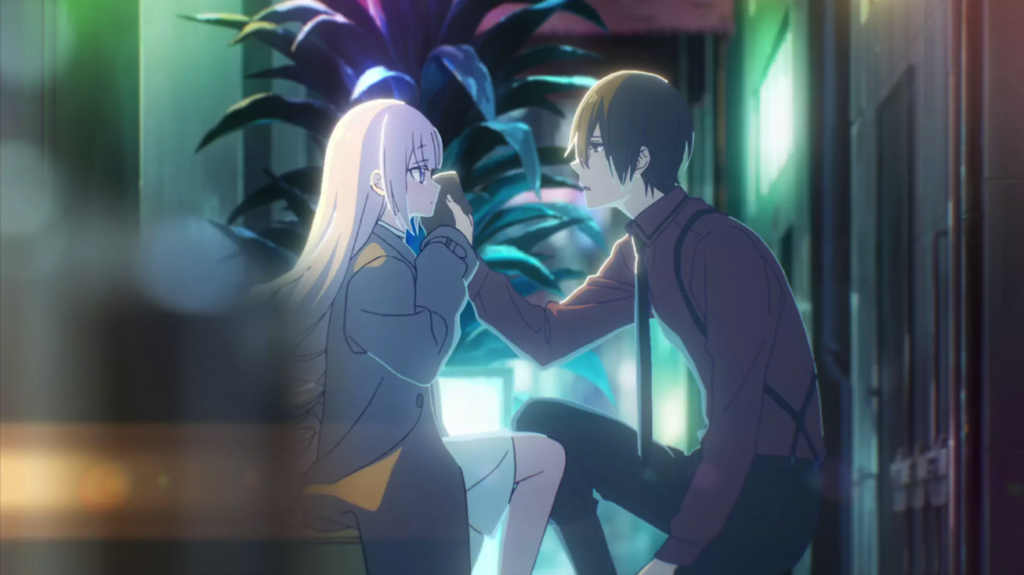
And of course, I couldn’t end my section without giving a quick shout-out to the wonderful The Magical Girl and the Evil Lieutenant Used to Be Archenemies, which proved a delightful watch from beginning to end. I was surprised to find that compared to the manga, studio BONES decided to create some original content toward the end and avoided going into the unfinished arc of the original, which I think has worked out much better for the story given the sad circumstances.
It’s clear that a lot of love and attention has gone into this from all involved, leaving us with a short and memorable anime that doesn’t overstay its welcome and proved a real delight week after week.
Wistoria: Wand and Sword, Shoshimin: How to Become Ordinary and The Magical Girl and the Evil Lieutenant Used to Be Archenemies are all available to stream on Crunchyroll
HWR
Hotly Anticipated…not so hotly finished off.
Back when we were discussing the previews for this series, I mentioned that this could turn out to be a potential comedic highlight for the season. Whilst it hasn’t quite reached this height and had its issues for me, My Deer Friend Nokotan was an interesting standout in terms of its premise and execution. To recap, MDFN follows model student and school-beauty Torako Koshi (Saki Fujita) an honour student hiding a delinquent past, who befriends (or rather is saddled with) the eccentric newcomer Noko Shikanoko (Megumi Han), an uncanny human-deer hybrid, with mind-reading capabilities, a love for deer crackers and, to both the detriment and relief for those around her, very little going on in her head.

The early episodes for this certainly showed some promise, and Studio WIT clearly had a lot of fun with the concepts and making their CGI comedic deer look better than some CGI I’ve seen from other anime as of late. Where I began to see flaws for the series came towards the end, not so much from a story perspective but from how the humour steadily plateaued for me, with less jokes landing as the series progressed. I did like some stories here and there like Torako’s yandere sister Anko (Rui Tanabe) and the deer-wannabe lazy Meme Bashame (Fuka Izumi) getting some time to bond, but ultimately humour is very much a subjective topic, and from what I’ve seen, others enjoyed this to the end, so maybe one day I’ll revisit these hijinks with a more positive outlook, and that OP will remain engrained for a while.

Returning Champion
Sengoku Youko has remained a fairly solid fantasy anime since it first aired during the Winter 2024 season, but its successor, the Thousand Demons Chaos Arc has built upon this to enhance my overall feelings toward the story, thanks to the episodes so far, which have marked an improvement over a flawed but promising first season
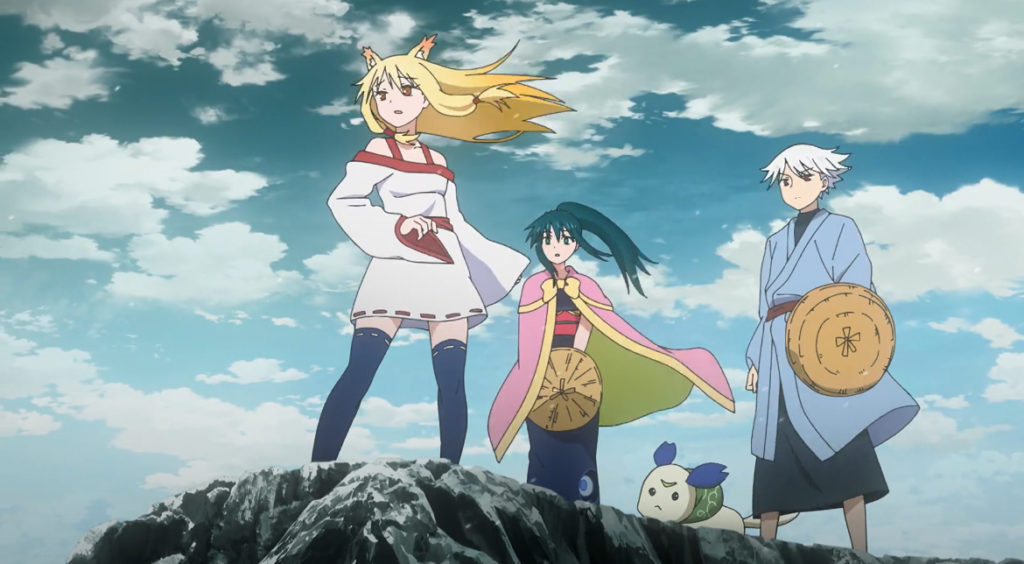
Where the initial episodes left off, we continued to follow ronin traveller Shinsuke Hyoudou (Ryouhei Kimura), who became embroiled in the world of the supernatural after meeting Tama (Yuuki Tadaka), a fox demon, and aiding her in the task of ending the long-standing feud between humans and demons. This led Shinsuke through difficult experiences that toughened and muted his sometimes-naïve personality, but also made him a good fit to become a travelling companion and adult figure for new lead character Senya (Hiroki Nanami), sporting a tragic backstory and relationship to partner and close companion in Tsukiko (Maaya Uchida).

The run of episodes from here have had their highlights, but the most recent episodes in particular stood out, especially in seeing Senya and Tsukiko grow, both physically but also harnessing their abilities. Seeing Tama in a more adult form interacting with the gang and a tragic reunion/showdown between Senya and his father, reunited after eight years, were the standouts for me, and have lent to this season being a considerable step-up from the previous one, thanks to a run of great episodes. The next anime season has a few heavy-hitters but I’m hoping that Sengoku Youko can hold its own as a seasonal highlight as it has done so here.
Though I don’t have any choices that I’d deem an unexpected diamond, The Elusive Samurai has stood out as a very solid series so far, despite its flaws, and I’ll give a mention to Shy’s Second Season as well for being an improvement over the first.
Both My Deer Friend Nokotan and Sengoku Youko 2nd Season are streaming on Crunchyroll.
Onosume
Returning Champion
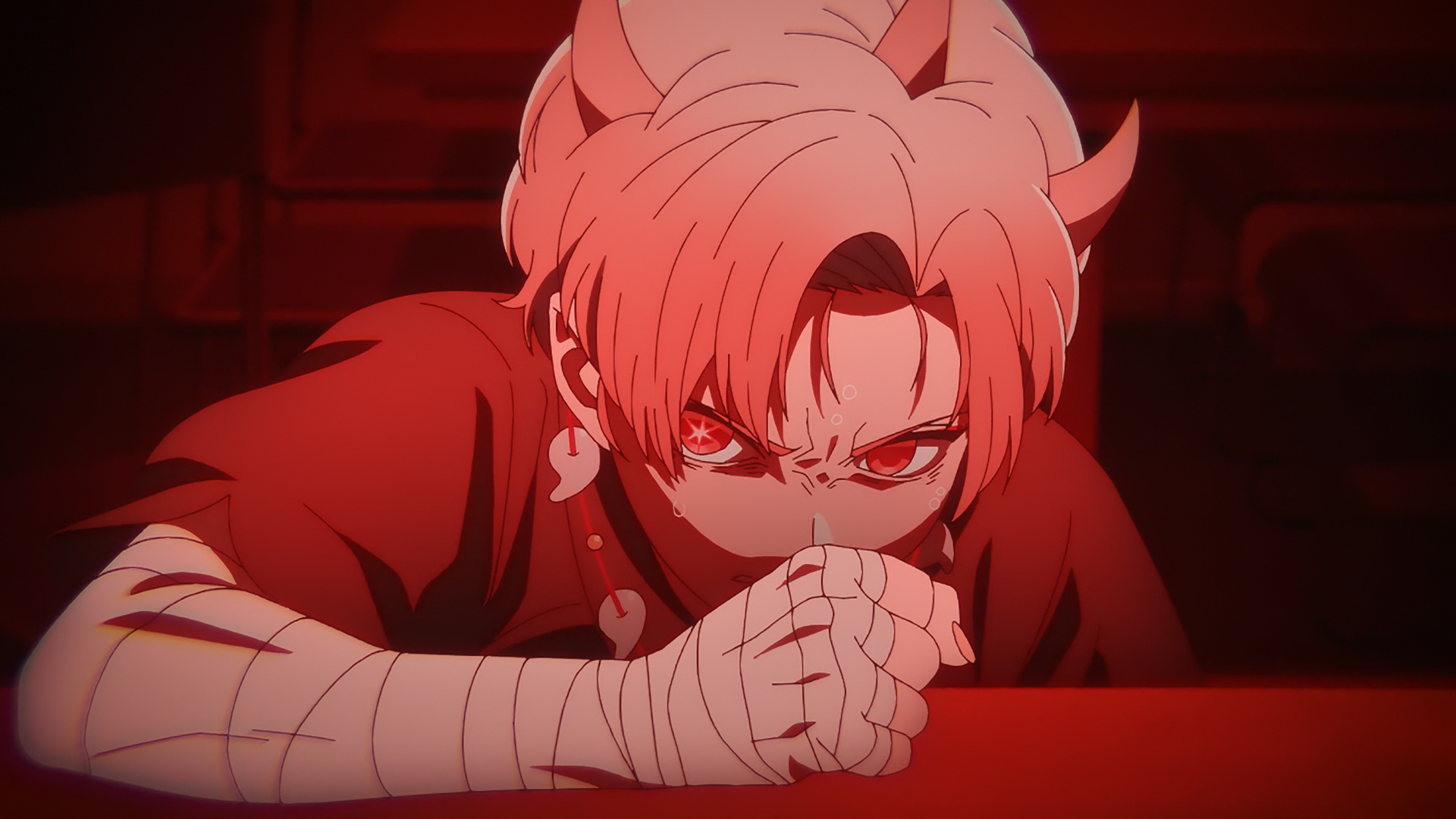
Out of all this season’s shows, it’s been [Oshi no Ko] that has been the one that I’ve had to watch the latest episode for as soon as it comes out, thanks to how gripping I found the first season, and that really has continued in a consistent manner, even though a lot of the big revelations are loaded into the latter third of the season.
The main focus for this season has been the Tokyo Blade arc, where we see Aqua get in on a theatre adaptation of the in-universe popular manga as he tries to investigate links between the theatre troupe that is performing it and his mother’s death. While there’s not too much in the way of actual investigation to begin with, what we see is a story that really pushes its character development in ways that has a lasting impact, both for Aqua and the rest of the play’s cast and staff. It does have a similar feel to the Big Brother/Terrace House-like reality show arc in the way it tries to dig down into the trauma of the side characters, and once again shows both their ugliest and best sides in a surprising amount of detail that makes you want to come back every week to see how they change.

The play itself is also really good to watch just on its own, and I liked how they play out the full thing over successive episodes with these character moments inserted at key junctures in the plot. And when everything is said and done, and it starts peeling back the curtain with how this ties into the main story… blimey the show goes some places mentally. A broken Aqua who has lost his spark is bad enough, but throwing it back to the place where it all began? Maybe not a good idea to revisit the resting place of your past life, just saying.
If I have to criticise anything, I think it’s the lack of action for Ruby and the B-Komachi girls that pulls it down a bit. While Kana is part of the play, the other girls just get ignored for most of the series and it would have been nice to have checked in on them properly even just once. Unlike in the first season where you’ve got multiple arcs, this is just hyper-focused on the one, so it loses a bit of the breadth that the first season had.
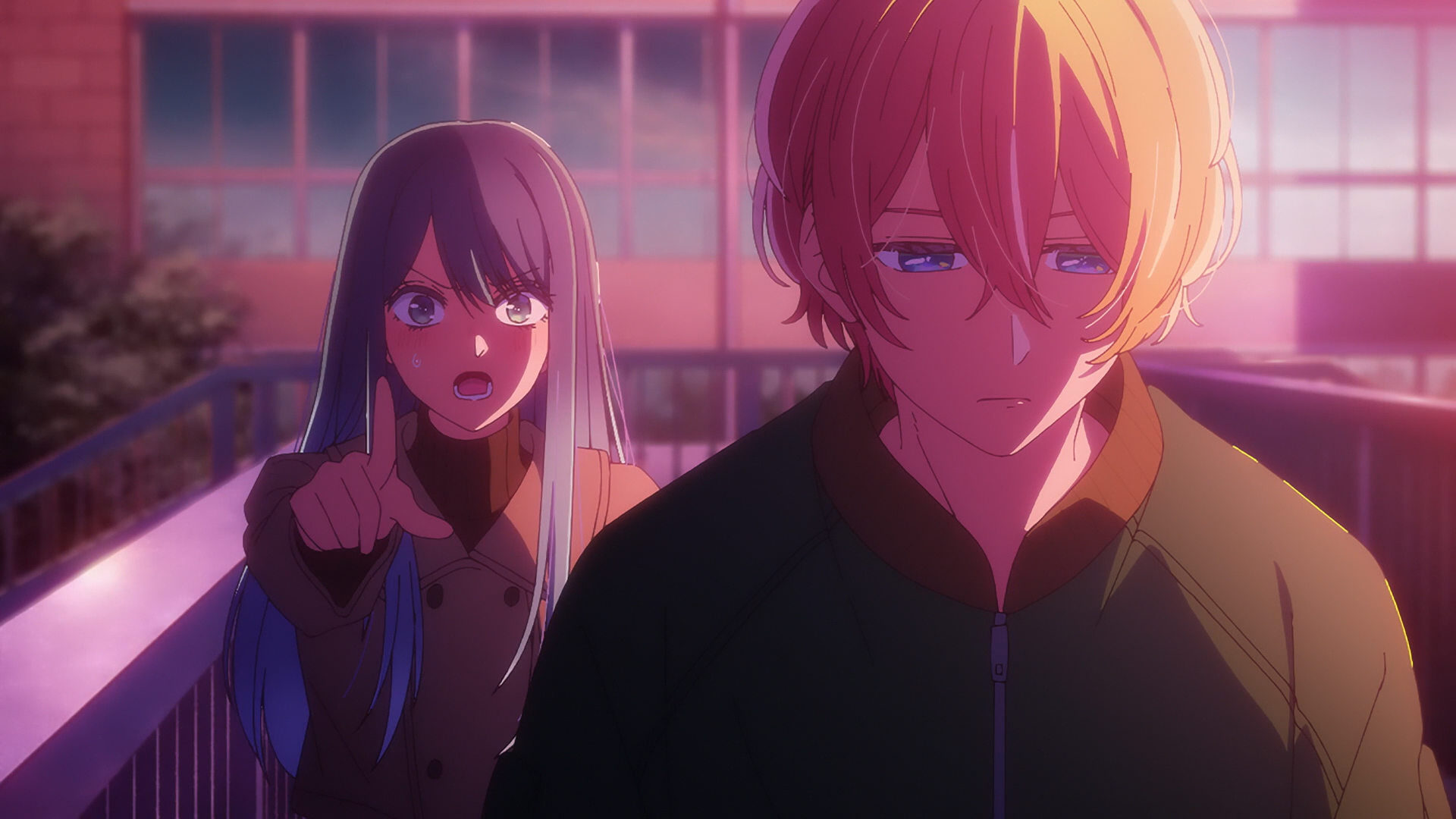
Overall though, I immensely enjoyed how this played out and I am definitely up for more coming off the back of the revelations in the last few episodes.
Unexpected Diamond

While some comedy shows have really failed to go the distance this season, like My Deer Friend Nokotan, Mayonaka Punch has been a hilarious thrill ride from start to finish.
It applies the same sort of comedy and character humour that made Zombieland Saga such a blast, only this time it’s about You– ahem, NEW Tubing. After Masaki is thrown out of the NewTube group “The Harikiri Sisters” after slugging one of her fellow group members live on stream, she attempts to come back on her own channel with one of those spooky abandoned building tours. However, while exploring an abandoned hospital, Misaki encounters vampire girl Live, who wants to suck her very tasty blood. Masaki agrees but only if Live can take her to NewTube stardom. Rope in Live’s other vampire friends (after splattering them with garlic mayo) and Mayonaka Punch is born!
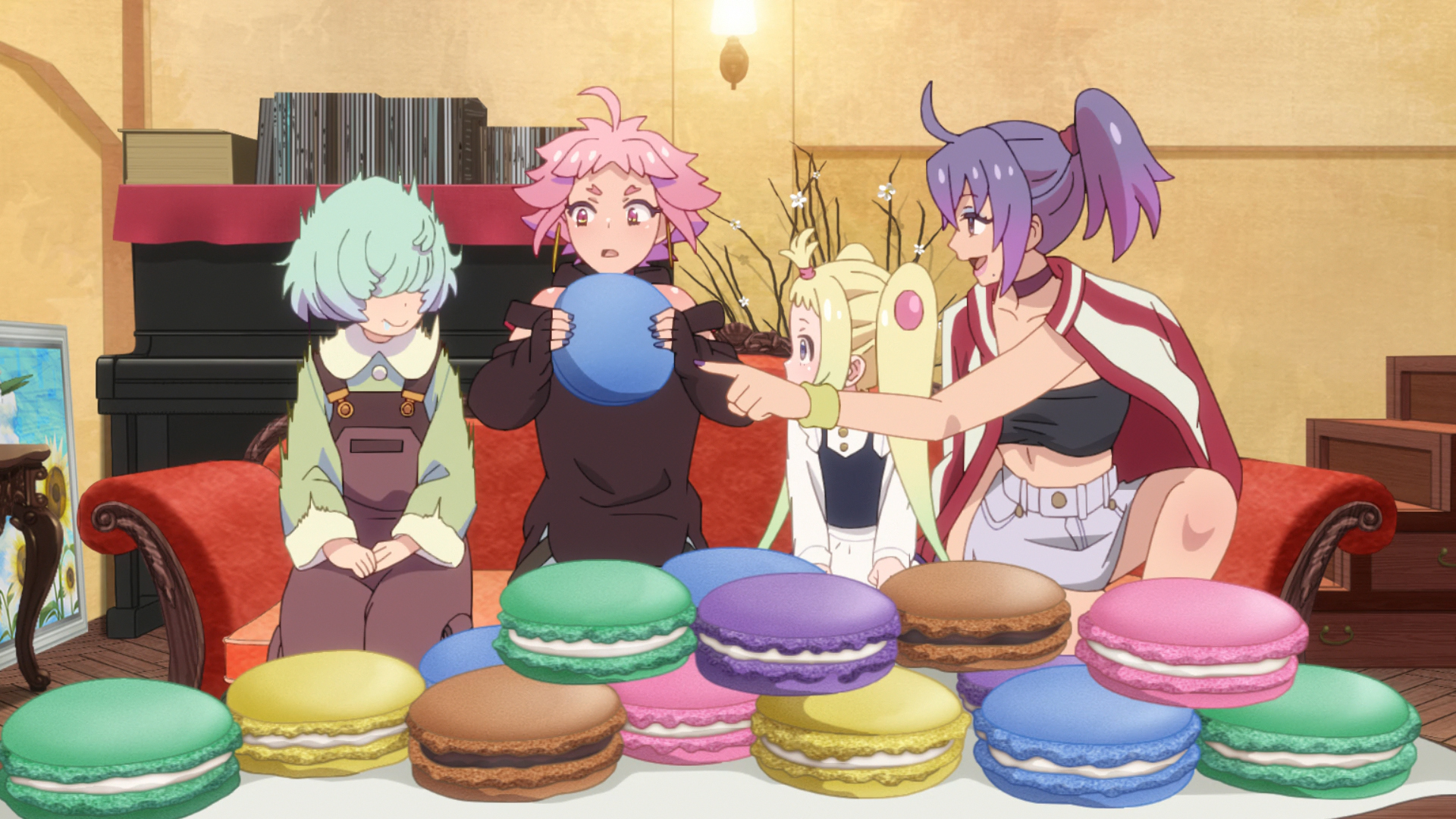
I think this show does a lot of things right in both examining and making fun of (in a very light-hearted and tongue-in-cheek manner) being a content creator, in the way you always have to go out and find the next big thing, deal with the mercy of the algorithm, and fight to make your channel both popular and profitable. While it starts out as a daft laugh, we get to see a real descent into delirium as the girls become more and more burned out until things gradually blow up for our cast. Each member of the group gets a good slice of the show to themselves and either delicately or raucously gets some backstory, and just like in Zombieland Saga it plays well on the vampire girls’ supernatural nature and the fact they can’t do the normal human things they’d like to do. As a result, it makes them seem more human than a lot of the human side characters in the show, and I think this really allows you to connect with them as you feel what they have gone through.

It also has some nice twists in its story to stop it from going stale, from raising the stakes as the vampire girls’ mother (implied to not be directly related but at least acting as both a maternal figure and a shadowy force pulling the strings) gives them an impossible challenge, while the ending really takes you by surprise as its entire scenario feels so real. I do like the art and character designs too, and its bright and cartoony look works wonders for what it is trying to achieve. I don’t think it quite hits the same highs as Zombieland Saga, but it sure comes close.
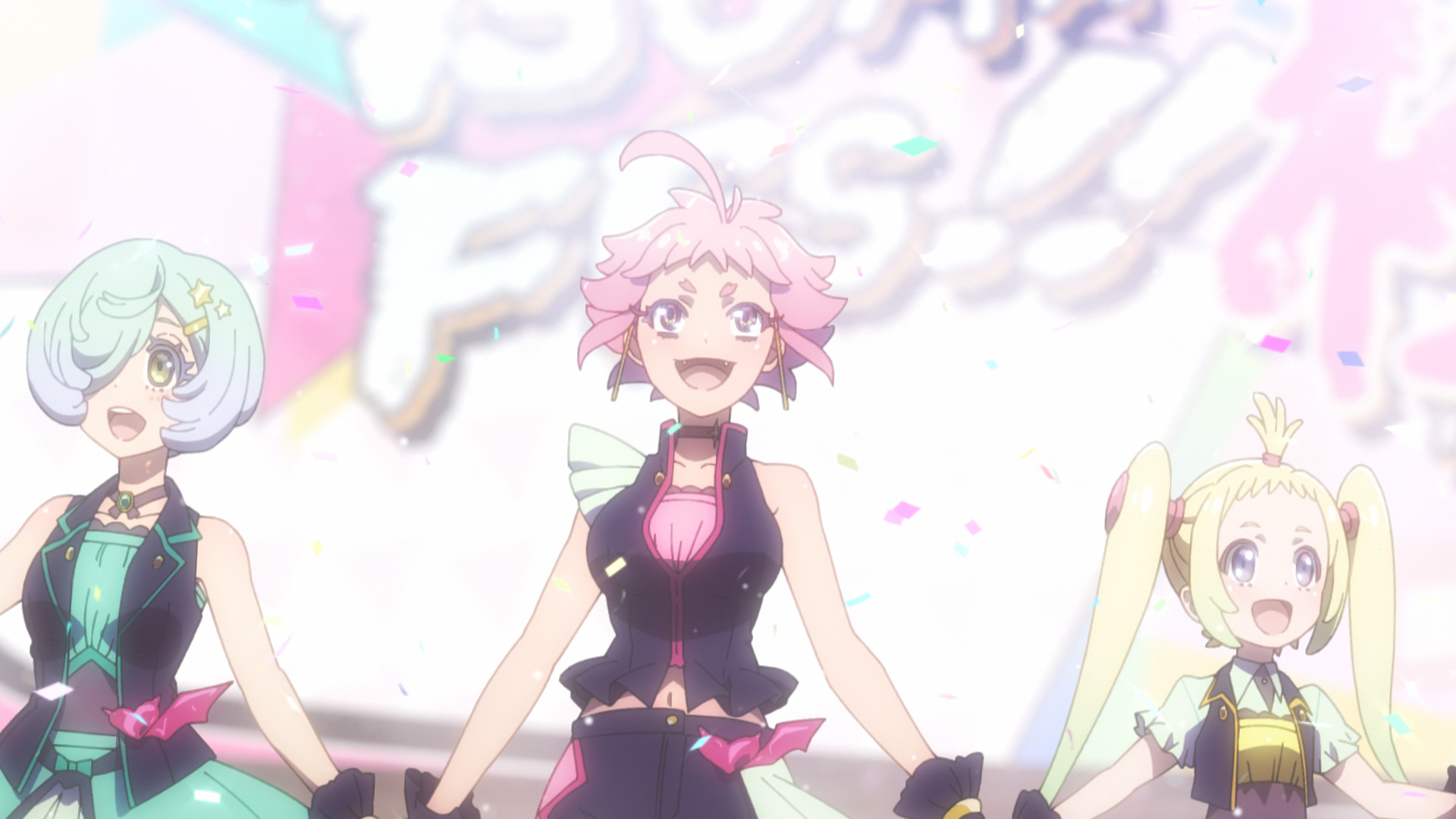
While P.A. Works can be a bit hit and miss with their shows, (proven by how mediocre Narenare: Cheer for You! has been this season) this is arguably one of their strongest shows since their last string of hits that included The Aquatope on White Sand, Ya Boy Kongming!, and Akiba Maid War. If you’re looking for a zany, off-the-wall supernatural comedy then I’d definitely recommend you give this one a go.
[Oshi no Ko] is available for streaming on HIDIVE, while Mayonaka Punch is available on Crunchyroll.
Cold Cobra
Hotly Anticipated
The Summer Season is normally pretty quiet for me, but beyond seeing the latest series of My Hero Academia come to a close (eventually…) there was one other series that caught my eye, but thanks to Netflix’s “release all episodes at once” policy I couldn’t preview it…
Terminator Zero has been on the books for a few years, therefore it was known mostly as “Netflix’s Terminator anime” for its first few years before the title was finally revealed. The show is a true mish-mash of Western and Eastern production as it’s written by American Mattson Tomlin but directed by Masashi Kudo, Japanese director of, among others, the Bleach anime; while its animated by anime legends Production IG but thanks to having the Terminator rights, it’s also produced by the American Skydance Television. Does all this back-and-forth work? Thankfully, yes, it does.

Terminator Zero does the only thing it can do when you look at the mess of films that came after the classic T2 and decides to step away from all that and tell a familiar yet entirely new tale instead, while keeping it in the same timeline as the films. Set in Tokyo instead of L.A. we still swap between a dystopian “future” 2022 and 1997, the year that the Skynet-led apocalypse begins but we focus on Malcolm Lee, an A.I. developer who lives in the busy city with three children, Kenta, Reika and Hiro, as well as a housekeeper called Misaki. Malcolm is cursed with the knowledge of the future apocalypse so he has created Kokoro, a counter A.I to Skynet, but by the end of Episode 2 he is mortified that it too sees humanity as nothing but barbaric killers that no longer deserve to live on Earth. Whoops! He and his family are soon visited by Eiko, who we first see in 2022 being pursued by a non-Arnold Schwarzenegger-looking Terminator.
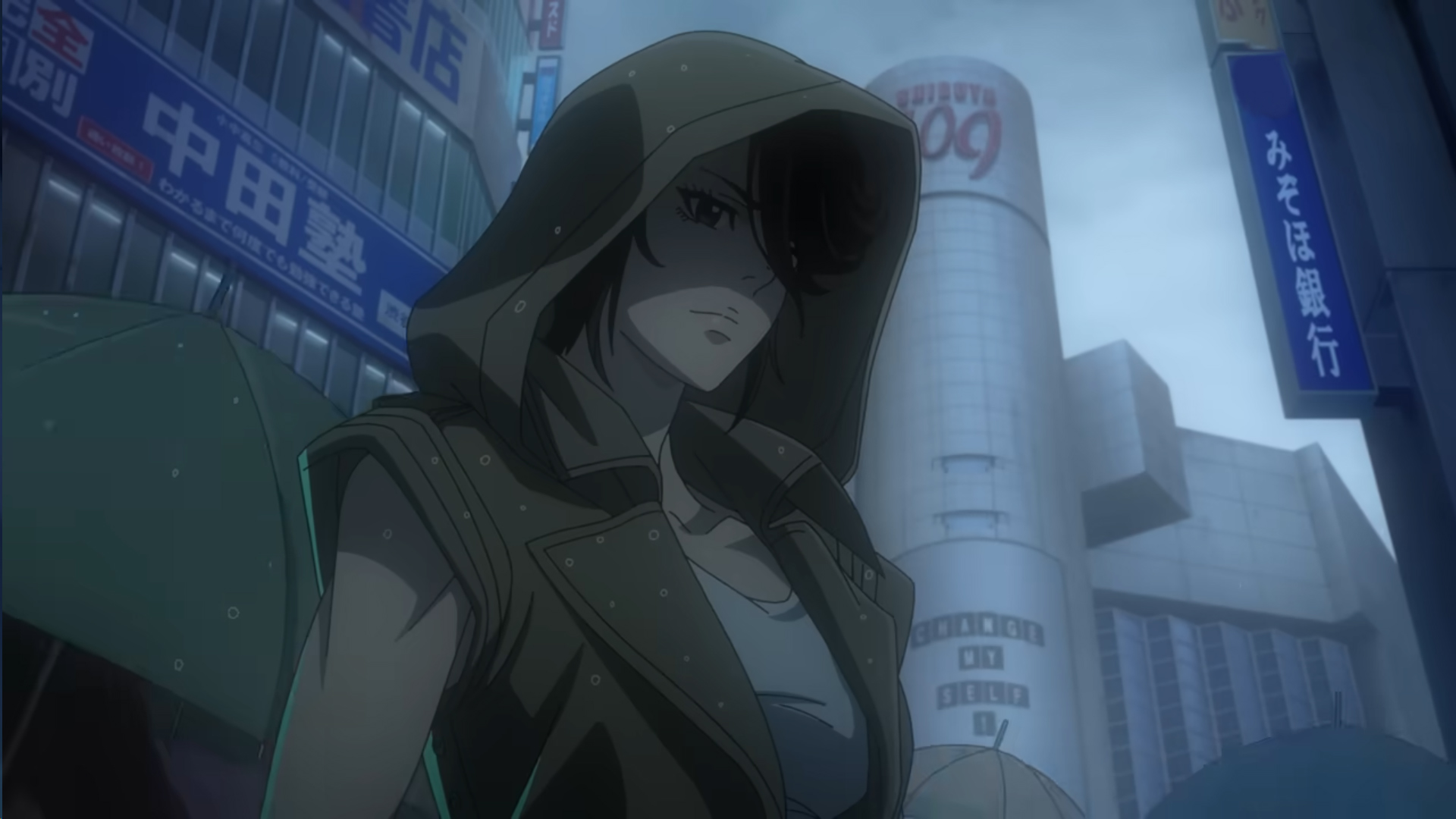
After escaping the killer robot, she and her resistance allies find out that it has been sent back in time to assassinate Malcolm and his three children, so Eiko is also sent back to 1997 to protect mostly Malcolm’s children as they’re of key importance to their present day, but she is also given the task to stop the Kokoro AI from launching. So a person is sent back in time to save a parent and his children from a Terminator because they’re important to the future and the evil AI of the future wants them dead in the past so they can’t be around to threaten them. It’s essentially the first two films rolled into one, but with a completely different setting and cast, so not the end of the world. Certainly a better idea than all the attempted reboots we’ve had on screen, even if it’s not dripping with originality. As you’d imagine, Production IG has done a great job with the visuals and both Japanese and English voice casts do their jobs well. At only eight episodes it’s definitely worth checking out; it was a fun story to blaze through in a few days.
Returning Champion
My Hero Academia is obviously the opposite to Terminator Zero in that instead of a single 8-episode drop it’s episode count is now in the triple digits and this two-cour season has been all about setting up and then going through the first half of the final story arc. This means there isn’t actually a whole lot I can talk about as the majority of this season has been heroes fighting villains as long-established storylines and lore finally start wrapping up. Lead villain All For One is trying to take over the body of young villain Shigaraki while leading a massive group of all the other bad guys and girls that are still around to take down the hero society in the eyes of the common folk and to steal the power known as One For All for himself. The current owner of that “Quirk” is our lead protagonist Midoriya, and he and the surviving heroes, both fellow classmates and the older more experienced ones, are aware of the battle ahead so come up with a plan to take down All For One and his group via the old divide and conquer method, knowing that if All For One and Shigaraki were in the same place, or worse that they fuse into a fully singular entity, then all hope would be lost.

Way back in the Spring preview I talked about one of the mini-arcs at the start of the season covering a betrayer in the midst of the heroes but due to this the betrayer (which I may as well not mention by name on the off chance it might spoil it for someone…) is used to draw out All For One by himself for a meeting and that’s where Midoriya confronts him, though All For One’s back-up plans have back-up plans and soon all the villains arrive to back him up, but soon all the heroes do the same. Their plan is put into action and thanks to some teleporting powers the heroes and the villains are divided up into several groups and deposited in different parts of Japan and that’s our set-up; each main villain gets to have a bit of a spotlight and their own storyline-relevant opponent to face without the other fights happening around them that could take away attention, including fan-favourite hero Shoto fighting his “evil” brother Toya, otherwise known as Dabi, which got quite the spectacular finale just this past week (as of this writing).
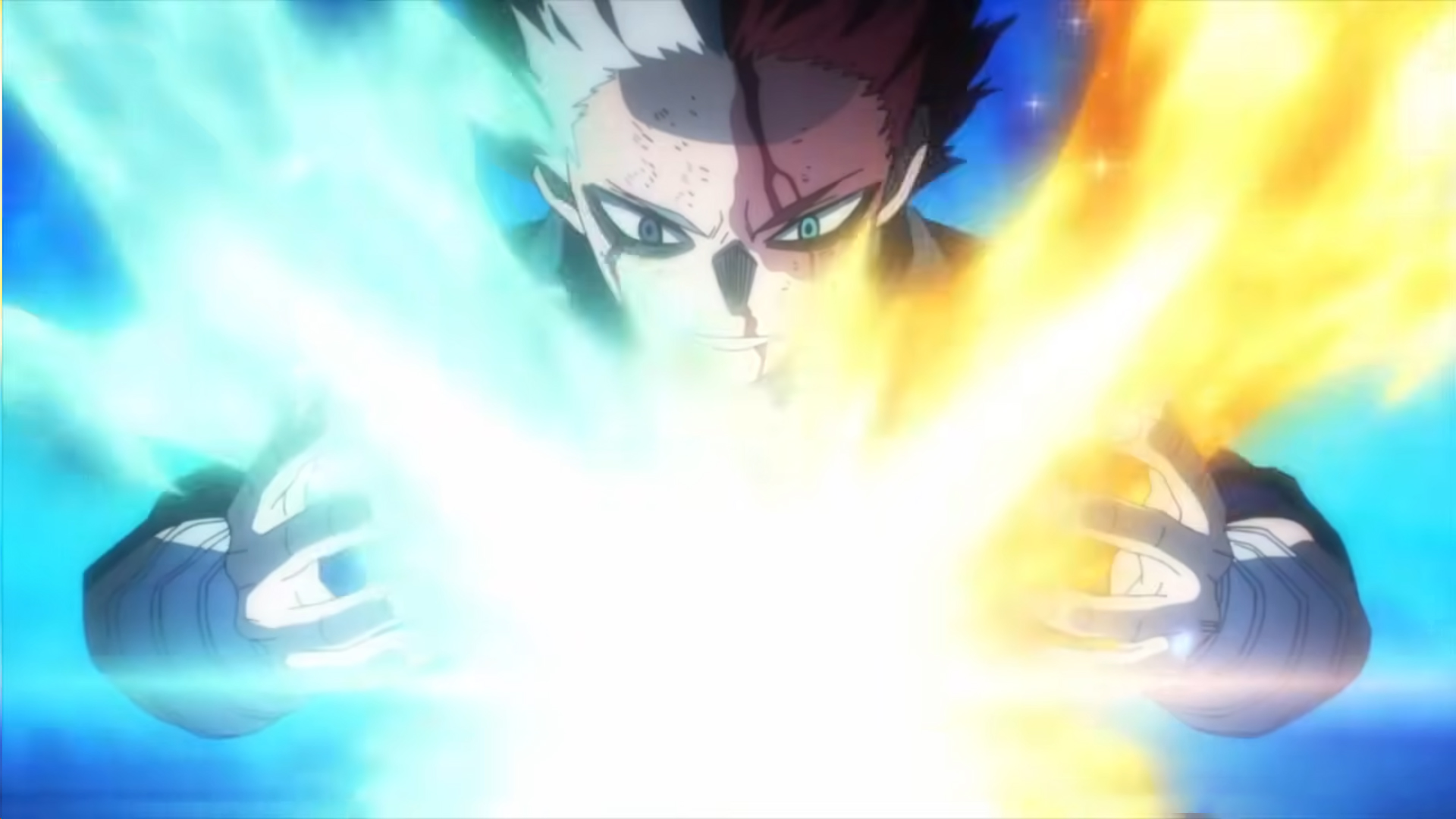
As per usual, the fight choreography/animation and production value in general is high, so the series is certainly doing its best to go out with a bang, even if the actual finale will come with the next season.
Terminator Zero is available for streaming on Netflix, while My Hero Academia is available on Crunchyroll.


